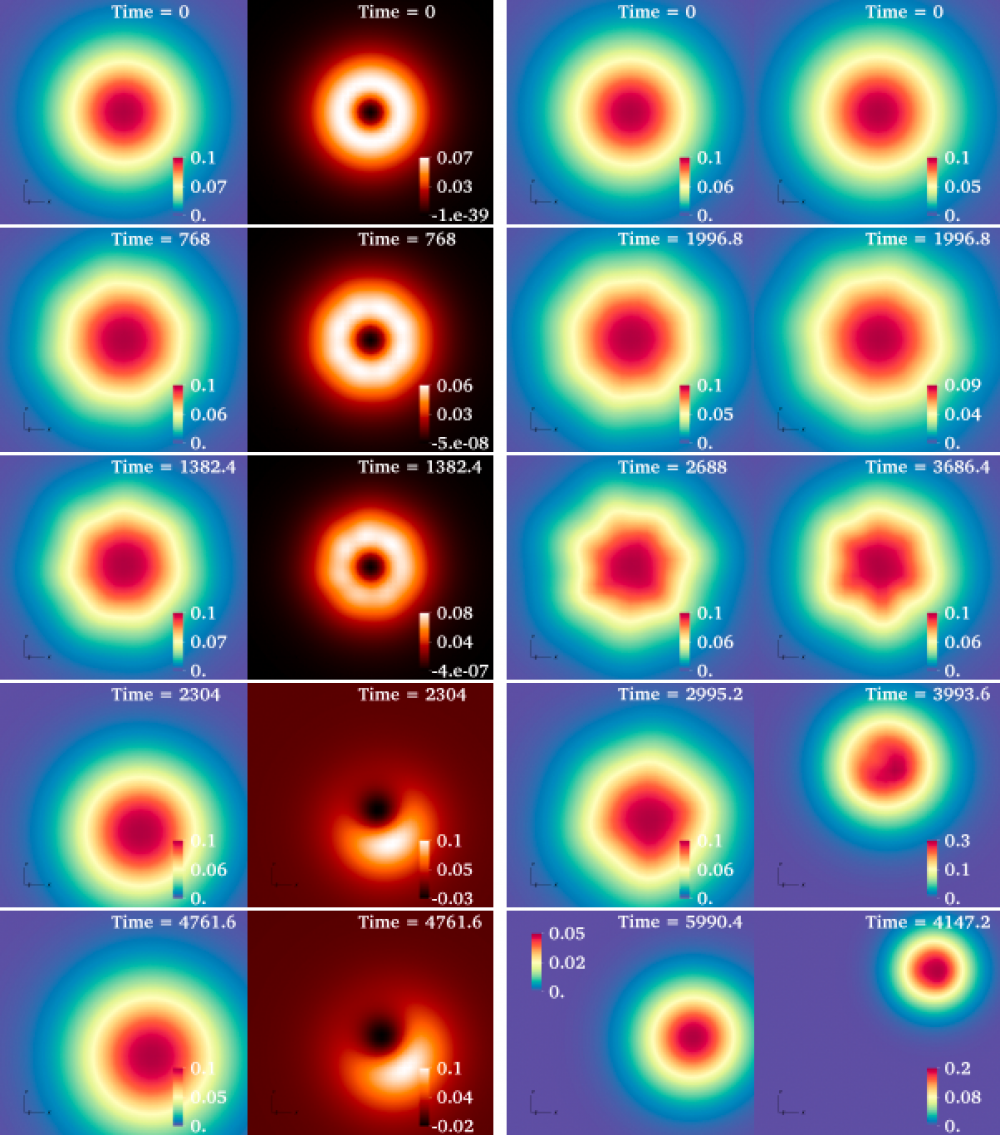In the paper "The fate of the light-ring instability" Gr@v members P. Cunha, C. Herdeiro and E. Radu, together with former member, currently at the U. Valencia, N. Sanchis-Gual, have unveiled the mystery of the fate of a large class of horizonless ultracompact objects, that could be potential black hole foils.
A long standing intriguing possibility is if the astrophysical black hole candidates could be some other kind of mysterious objects but without event horizons, the defining property of black holes.
Such hypothetical exotic compact objects (ECOs) could imitate the strong gravity phenomenology of black holes in particular if they contain light rings. It then becomes an important question if ECOs with light rings (also called ultracompact objects, or UCOs for short) are dynamically viable.
In the paper "The fate of the light ring instability" it is argued (following previous works) that UCOs possess an instability and it is shown that this instability is effective in destroying the UCO, with two possible fates: migration towards non-UCOs or collapse into black holes.
Concrete examples of UCOs were studied, namely bosonic stars.
A first model studies fundamental spinning Proca stars, which can be labelled by the frequency w. These stars become UCOs, but free of any other known instabilities for 0.602<w<0.711. What happens if we evolve spinning Proca stars in this range?
In this movie we can see the evolution of one such Proca star with w=0.68:
The star develops an instability that mildly destroys its axi-symmetry and loses a part of its energy and angular momentum, mostly carried by ejected Proca field. It also suffers a little kick, moving away from the grid centre. The star actually migrates towards a non-ultracompact Proca star. This can be appreciated looking at the adiabatic effective potential. Its evolution is shown in this movie (see paper for more details):
The next movie shows a similar evolution, now for a spinning Proca star with w=0.69 (also an UCO). One can see a similar instability developing, albeit at a later time:
The next movie shows yet again a similar evolution, now for a spinning Proca star with w=0.70 (also an UCO). One can see a similar instability developing:
The next movie shows the evolution of a non-ultracompact spinning Proca star, with w=0.72. No instability is seen:
But migration to non-ultracompact objects is not the only possible fate of UCOs. Another possible fate is collapse into a black hole. This is seen, for instance, in a model of solitonic spinning scalar boson stars (see paper for details). The next movie shows an evolution of one such star (w=0.16), where one can see the star disappears, the reason being a horizon forms, as described in the paper:
